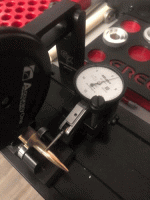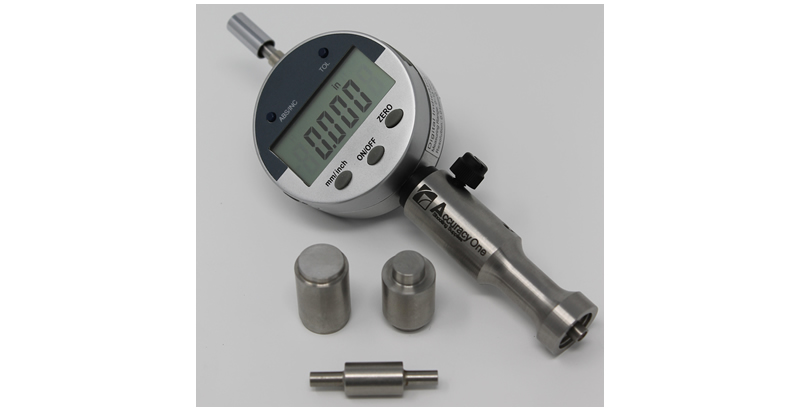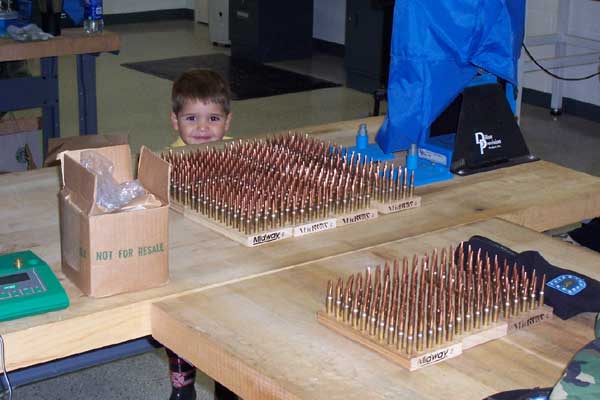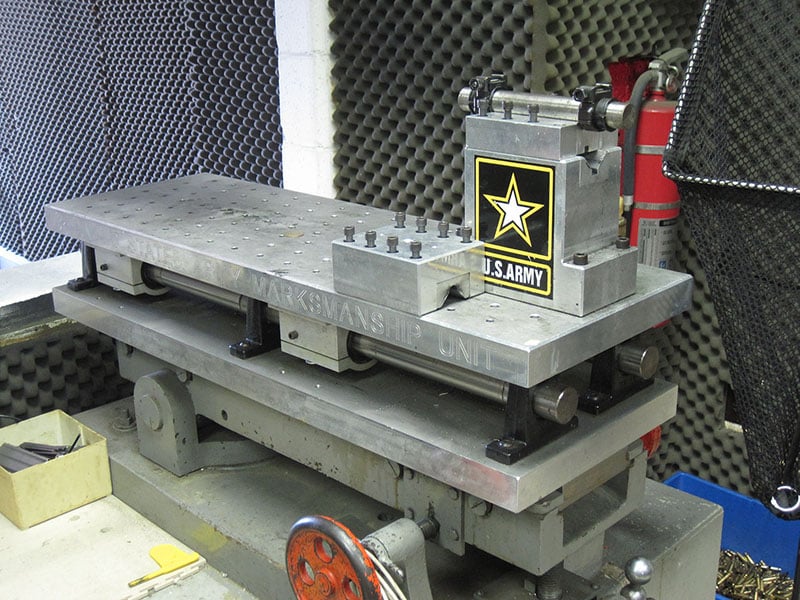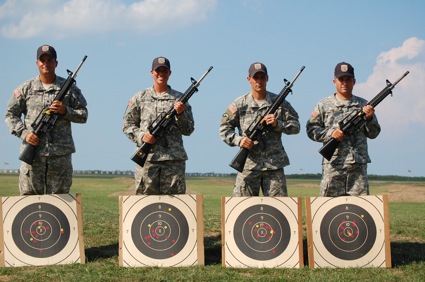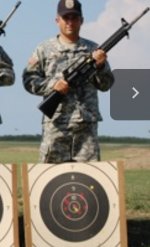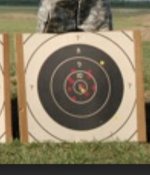I load for myself and my son. I have also loaded for teams of over a dozen and produced Army and National Champions.
For me, I always look for the sweet spot to produce affordable quality precision ammo. That doesn't mean cheaply, as
my time also comes at a premium.
For ammo production, these are some of the tools I've invested in over the years. Johnny Cash one-piece-at-a-time wasn't nearly as painful as buying all at once.
Presses
for pistol, two Dillon 550s (one for small primers and one for large);
for service, combat, and sniper rifle a Forster CoAx using RCBS Small Base Dies for sizing and Forster Benchrest Seating dies (alternately between a Forster, Dillon, or Redding T7, depending on speed and volume required;
for .338 Lapua Magnum a Redding Ultra Mag and Warner dies.
Case prep and handling
Thumler's (dry) Tumbler
Ken Light Annealing Machine
Home-made spray case lube (lanolin and HEET)
Frankford Arsenal (Wet) Tumbler
Dillon media separator
Dillon primer pocket swaging machine
Giraud, Forster, and Wilson Trimmers (depending on caliber)
Wilson and Dillon drop-in case gages (for spot-checking length)
Lee Auto-Primes (the old ones)
Dial micrometer
Cartridge measuring
Stoney Creek (now Hornady Lock-and-Load) headspace tools and gages
Powder charging
Dillon powder measures (on the machine) for pistol;
Redding BR3 measures;
Two Chargemaster 1500s;
RCBS (Ohaus) 5-0-5 scale
If I could afford it:
Building a climate-controlled hand loading / production facility like the Army Marksmanship Unit's with all the gadgets and built-in test range. The loading staff has Olympic Gold and Silver Medalists and one fella who actually wrote the book on loading for AR service rifles --
View attachment 7773753
Results from AMU handloads fired with a sling and a 4.5 power scope at 600 yards:
Sling and iron sights from an AR-10 at 1,000 yards (the yellow shot spotters mark the first two sighting shots -- best 4-man team score decides the National Champion Team):


